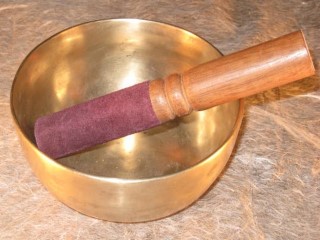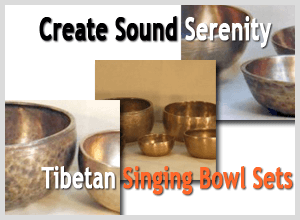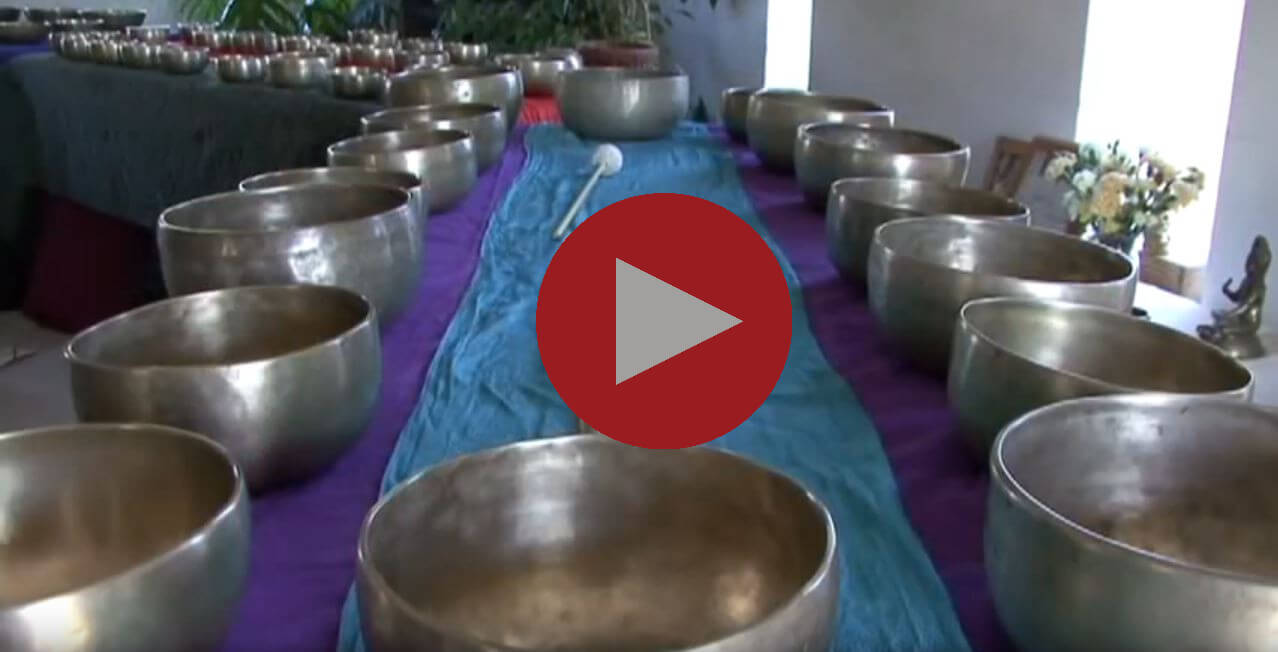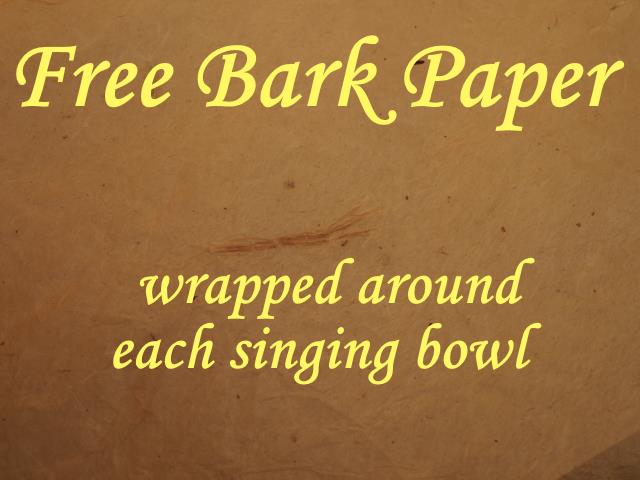Standards are important. Objective definitions help clarify expectations and provide a base of fairness.
Singing bowls are a bit like the Wild West, with no rules really. I move through the world intending to operate with clarity and transparency. In Singing bowls, standards are my way of going about this.
Developing standards in a regulatory vacuum where customers have a right to know is nothing new for me. In the 1970’s I supported the first state regulations defining “organic” foods. In the 1980’s I participated shaping the Federal Organic law, and in the 90’s was part of the movement to protect the integrity of the original organic vision during the USDA rules promulgation process. As one of the founders of Maggie’s Organic Products I helped establish the standards for organic cotton clothing. Whether you buy from Best Singing Bowls or not these singing bowl standards should be helpful guides.
The singing bowls I select all have complexity, balance, and sweetness. Just because a singing bowl has some great tones or goes woo-woo it doesn’t mean it has great quality or overall soundscape. The sounds in the bowl have to hang together well and at least some of the tones need to be audible for a good period of time. You will see tone longevity referred to as “sustain” in the individual descriptions. All the singing bowls for sale are multi-tonal with at least two but often three or four distinct tones. Simply put, what you see on the Best Singing Bowls website are examples of the best sounding antique Tibetan and Himalayan bells available anywhere. Whatever the style or price, every singing bowl for sale here has uncommon sound quality.
Not all antique brass bowls sound good, far from it. The great sounding antiques that qualify for the best have sonic characteristics that are rated near the top of the scale in Nepal. On a statistical basis I would say maybe a quarter of the old brass bowls coming out of the countryside have musical qualities and of these maybe a quarter (say the top 5% ) are top quality quality. This top quality is the focus of Best Singing Bowls. Of this top quality group only about 15-20%, that is the top 1% qualify for the highest ratings of exceptional and premium. I also should caution you that my specialized ear can hear fine distinctions, and like in wine tasting the fine distinctions of an expert may not have meaning for you. What does matter is the baseline, I think most people can hear the difference between a the top 5% available here and the great mass that go into the less specialized trade. You can still have great sound while being a bit weak in sonic elements like balance, sustain or sweetness. While it takes a good ear to hear differences between excellent bowls, I believe we are all sensitive to deep harmonies on a subconscious level. You can feel the difference, especially when you hear that same sound over and over, year after year.
There is another important factor in judging singing bowl quality; the human factor. The incredible complexity of the sounds in a premium-quality singing bowl defy a totally dry objective analysis. Once you have sorted out the top 5-10% what you think is the absolute best has to do with taste as well. What I sell says to me both “that sounds great” and “I like it”. Whatever I bring in are also has to make me feel good. I reject the occasional top quality item because of some subtle reaction in my gut.
Every singing bowl has a strong sound that you first hear when you play it. It may not be the most prominent tone and is often not the longest lasting tone but it is the most immediately apparent one. I use this tone to assign the note and octave to a singing bowl. The way I determine the note is to strike singing bowls with a mallet that does a good job of bringing out the complete range of tones. Years ago I used a Korg electronic tuner to read the sound and assign the note. Those old stand alone tuners jumped around a lot and were not capable of tracking more than one tone at a time. Phone aps, especially ones with readouts in Hz tend to be better. What is used to determine notes and frequencies here is custom written software using sound engines developed for composers. This specialized software is capable of tracking many notes simultaneously. Frequencies are also checked against software developed in the UK to assign frequencies to old church bells. This way the notes assigned have an objective basis.
I arrange singing bowls in a frequency hierarchy to assign the octave. Currently I have singing bowls in five octaves which I label very low, low, middle, high and very high. A small Manipuri middle octave C can have the same frequency as a massive middle C Thadobati, however the sound will be very different.
You will find that sitting a single singing bowl next to a tuner and ringing it to get a note is asking for trouble. The soundscapes are so complex and so idiosyncratic that often the tuner throws up wildly disparate notes. If all you have is a tuner or phone ap, the best way to have confidence in the notes is to reference other bowls so you have a broader statistical sample. Back in the old days I used to arrange hundreds of bowls in tone sequence to give me the best chance for accuracy.
Sometimes a reading will be right on the cusp between notes. You can see this on simple note tuners, the reading flipping back and forth between one note and the next. In these cases the note assigned is based on a judgment call. I don’t want to muddy the waters, the labeling here is extremely very well considered and as accurate as I believe possible. It will never be a full note off. I can’t tell you how many incorrect notes I’ve seen from other sources over the years.
One aspect used to judge singing bowl quality is cosmetics, especially hand etching and color. Singing bowls can be plain, come with simple lines, or have elaborate ornamentation and inscriptions. They can be in various states of preservation and can be of an unusual or rare style. Tibetan singing bowls can be clear and have attractive patina and intrusions or unattractive staining. Simply put there is a wide range of eye appeal available in the marketplace. Still, eye appeal comes second to sound.
The majority of singing bowls I sell have been cleaned by hand both during regular use and in preparation for sale. Home cleaning – what happened in the time before it entered the supply chain – can range from gentle to harsh. For the most part cleaning is of the more gentle kind with water, possibly soap and cloth. When you see old worn antique bowls you can imagine how many cleanings they must go through before the end up with the type of wear evident on them. On the not so gentle side, cleaning can be with sand, scouring powders even caustic chemicals. I see an occasional spectacular sounding antique that has been cleaned out with a power tool like a router. Yes… a handmade antique with machine marks! When the cleaning is superficial with cloth and water original patina is retained. Chemically cleaning can also result in nice patina though not an original one. Some big Jambati and ceremonial styles have been obviously cared for well and evidence little wear.
Hard as it may be to believe, some singing bowls have been used as cooking pots on top of wood fires and have a thick black coating on the bottom. They can be coated so badly you really can’t hear them clearly. This is more often true of smaller sizes that have been kitchen implements for the last century or so than larger ones that might have been used for grain storage or even occupied a place of honor in a home. When I go through raw singing bowls, the really dirty ones coming directly out of the countryside, sometimes I have to just hope the potential is realized when it has been cleaned. Just how far to go in cleaning is up to the buyer – at least if they are on site prior to export prep. If a singing bowl can be left with its original patina, even if that is a less than attractive stain, my numismatic background biases me against over-cleaning and I instruct my people to hand wipe with cloth.
I must admit I do like the look of brightly polished singing bowls. The mix of metals in antiques lend themselves to intensive cleaning and some can be buffed to an incredible new luster which can be quite attractive. That being said, you won’t find a lot of choices buffed to brilliance on this website. For the most part the really bright ones are the rare old ones that have been cleaned thoroughly and regularly over the years. Sometimes this natural state is polished as opposed to cleaned. You can select for this feature by filtering for polished on the main display page. Of course, if you prefer the new look you can take a singing bowl with original patina and buff it with the caveat that you are removing metal and there is always a slight risk that the tone will change subtly. I have done some experimentation with polishing but have not yet ventured there. At the present what you see here is how they come in from the field.
While each singing bowl for sale has the character you would expect from an individually handmade antique, looks are secondary from my perspective. When I’m ringing away I don’t really pay attention what I am playing looks like, I’m all ears. You will find our Himalayan singing bowls labeled by type, state of preservation and markings but that comes after first choosing them for sound. I leave behind lots of impressive looking singing bowls that are thin on sonic profundity.
Unlike some sellers who are less focused on sound, I will bring back less than sparkling cosmetics. You will see for sale the occasional discolored, scratched, or even cracked antique with incredible sound. I try to be scrupulous about labeling these flaws and will document them with photos as well as notes. If looks are really important you can steer around them but some of the best values are in these flawed “not so beauties”.
Cracks are one of those things you need to contend with in antique singing bowls. Some have cracks from the original artisan work but most have to do with handling. Cracks high up on the side wall are usually audible as are cracks over about an inch in length which make them unsuitable as instruments. Cracks in the very bottom are generally benign as are surface cracks that you can see on only one side. My standard is if the crack has the slightest impact on the sound it is a reject, if it seems stable, not likely to change and I can’t hear it I will buy the singing bowl. Singing bowls can have hidden cracks. You can’t see them, sometimes you can’t even hear them but you can feel them. I always leave these behind because there is a chance the crack will grow with playing.
















